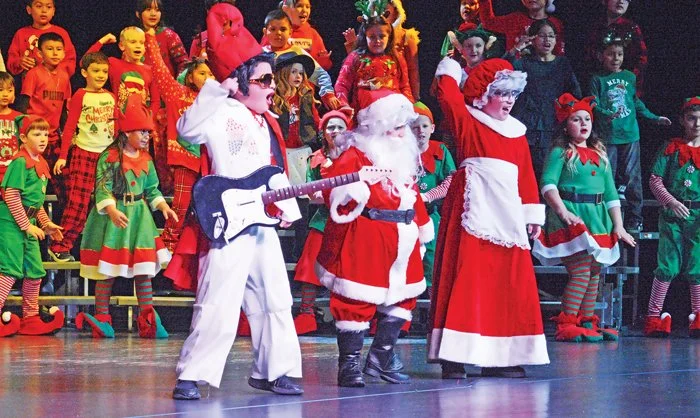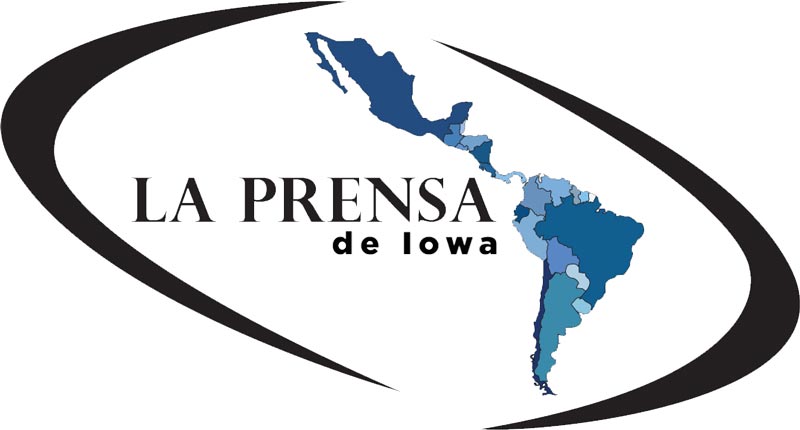La Guadalupana
/La Guadalupana
Lorena López Altamirano
El origen del Día de la Virgen de Guadalupe se remonta al 12 de diciembre de 1531, cuando la Virgen María se apareció al indígena Juan Diego por cuarta vez en el cerro del Tepeyac.
Desde entonces los latinos católicos de diferentes partes del mundo, especialmente los mexicanos celebran y veneran a la Guadalupana con ardua fe en cualquier parte que se encuentren.
En Denison, centenares de personas de todas las edades se hicieron presente el 11 de diciembre en la iglesia Santa Rosa de Lima para cantarle ‘Las Mañanitas’ a la Guadalupana. Posteriormente, se ofrecieron alimentos en la casa parroquial de la misma iglesia donde aproximadamente 500 personas fueron alimentadas con variedad de suculentas comidas y bebidas calientitas.
Valeria Vargas desde hace varios años viaja a Denison desde Ralston, Nebraska para venerar a la Guadalupana por favores recibidos.
El niñito Ángel nos dijo que el disfruta cantarle alabanzas a la Guadalupana.
Feligreses disfrutan de un suculento alimento después de cantarle “Las Mañanitas a la Virgen.
Un grupo de servidoras de la Iglesia Santa Rosa de Lima se regocijan de alegría al servir los diferentes alimentos que muchos de ellos fueron preparados por ellas mismas.
Adrián Paz lava los sartenes donde horas tempranas de la madrugada la comida se estuvo preparando.
Feligreses saborean el rico champurrado que les ayudó a olvidarse del frio de la mañana.
Vicenta Cárdenas calienta las tortillas que alimentaron a más de 500 personas.
El espíritu de gozo al celebrar a la Guadalupana se ve reflejado en la risa de esta mujer, que mientras sirve alimentos le canta a la Virgen.
No solamente la fe, sino que también la cultura y las tradiciones son trasmitidas de generación en generación. Mujeres de diferentes edades visten con orgullo a sus hijos y nietos del tradicional traje de Juan Diego o de la cultura típica mexicana.
El grupo de baile típico de niñitas deleitaron a los presentes con diferentes bailes folclóricos.
Jóvenes de diferentes edades también deleitaron al publico con sus bailes.
Translation
The Guadalupana
Lorena López Altamirano
The origin of the Day of the Virgin of Guadalupe dates back to December 12, 1531, when the Virgin Mary appeared to the indigenous Juan Diego for the fourth time on the Tepeyac hill.
Since then, Catholic Latinos from different parts of the world, especially Mexicans, celebrate and venerate the Guadalupana with arduous faith wherever they are.
In Denison, hundreds of people of all ages showed up on December 11 at the Santa Rosa de Lima church to sing "Las Mañanitas" to the Guadalupana. Subsequently, food was offered in the parish house of the same church where approximately 500 people were fed with a variety of succulent foods and hot drinks.
Valeria Vargas has been traveling to Denison from Ralston, Nebraska for several years to venerate the Guadalupana for favors received.
The little boy Ángel told us that he enjoys singing praises to the Guadalupana.
Parishioners enjoy a succulent meal after singing "Las Mañanitas a la Virgen.
A group of servants from the Santa Rosa de Lima Church rejoice with joy when serving the different foods that many of them were prepared by themselves.
Adrián Paz washes the pans where food was being prepared early in the morning.
Parishioners savor the delicious champurrado that helped them forget about the cold in the morning.
Vicenta Cárdenas warms up tortillas that fed more than 500 people.
The spirit of joy when celebrating the Guadalupana is reflected in the laughter of this woman, who while serving food sings to the Virgin.
Not only faith, but also culture and traditions are passed down from generation to generation. Women of different ages proudly dress their children and grandchildren in the traditional Juan Diego costume or typical Mexican culture.
The typical dance group of little girls delighted those present with different folk dances.
Young people of different ages also delighted the public with their dances.








































































